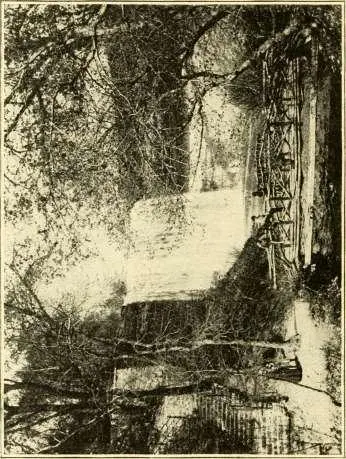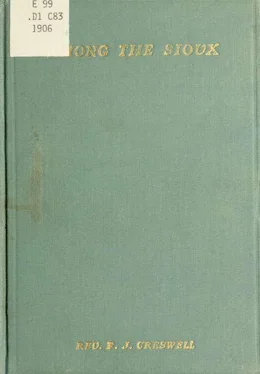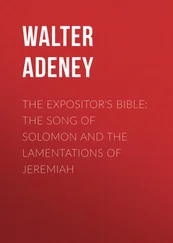Creswell, J.) - Among the Sioux - a story of the Twin Cities and the two Dakotas
Здесь есть возможность читать онлайн «Creswell, J.) - Among the Sioux - a story of the Twin Cities and the two Dakotas» весь текст электронной книги совершенно бесплатно (целиком полную версию без сокращений). В некоторых случаях можно слушать аудио, скачать через торрент в формате fb2 и присутствует краткое содержание. Жанр: Старинная литература, на английском языке. Описание произведения, (предисловие) а так же отзывы посетителей доступны на портале библиотеки ЛибКат.
- Название:Among the Sioux : a story of the Twin Cities and the two Dakotas
- Автор:
- Жанр:
- Год:неизвестен
- ISBN:нет данных
- Рейтинг книги:5 / 5. Голосов: 1
-
Избранное:Добавить в избранное
- Отзывы:
-
Ваша оценка:
- 100
- 1
- 2
- 3
- 4
- 5
Among the Sioux : a story of the Twin Cities and the two Dakotas: краткое содержание, описание и аннотация
Предлагаем к чтению аннотацию, описание, краткое содержание или предисловие (зависит от того, что написал сам автор книги «Among the Sioux : a story of the Twin Cities and the two Dakotas»). Если вы не нашли необходимую информацию о книге — напишите в комментариях, мы постараемся отыскать её.
Among the Sioux : a story of the Twin Cities and the two Dakotas — читать онлайн бесплатно полную книгу (весь текст) целиком
Ниже представлен текст книги, разбитый по страницам. Система сохранения места последней прочитанной страницы, позволяет с удобством читать онлайн бесплатно книгу «Among the Sioux : a story of the Twin Cities and the two Dakotas», без необходимости каждый раз заново искать на чём Вы остановились. Поставьте закладку, и сможете в любой момент перейти на страницу, на которой закончили чтение.
Интервал:
Закладка:

PEIRII^S BY THE HEATHEN
Missionaries fleeing- from Indian mas-I sacre in 1862.
Thursday morning of that terrible week, after an all-night's rain, found them all cold, wet through and utterly destitute of cooked food and fuel. That noon they came to a clump of trees and camped down on the wet prairies for the rest of the day. They killed a stray cow and made some bread out of flour, salt and water. An artist, one of the company, took the pictures here
the field of battle. He had wrought, in secret, with his fellow-tribesmen, until he had succeeded in the fomia-tion of the greatest combination of the Indians against the whites since the days of Tecumse'h and the Prophet in the Ohio country, fifty years before. He had under his control a large force of Indian warriors armed with Winchesters; and on the morning of the battle, he mustered on the hills around New Ulm, the largest body of Indian cavalry ever gathered together in America.
The whites arose in their might and, under the leadership of that gallant general, Henry H. Sibley, gave battle to their savage foes. Then followed weeks of fierce and bloody warfare. It was no child's play. Dn the one side were arrayed the fierce warriors of the Sioux nation, fighting for their ancestral homes, their ancient hunting grounds, their deer-parks and the graves of their ancestors. "We must drive the white man east of the Mississippi," was the declaration of Little Crow, and he added the savage boast; 'AVe will establish our winter-quarters in St. Paul and Minneapolis." Over against them, were the brave pion-etrs cf Minnesota, battling for the existence of their beloved state, for their homes, and for the lives and honor of their wives and daughters. The thrilling history of the siege of New Ulm, of the battle of Birch Coullie, of Fori Ridgcly and Port Abercrombie, and of other scenes of conflict is written in the mingled blood of the white man, and of the red man on the beautiful plains of western Minnesota. The inevitable re suit ensued. The Sioux were defeated, large numbers
were slain in battle or captured, and in despair, the others fled to the then uninhabited regions beyond the Red River o\ the North. Many of these found refuge under tlie Hritish flag in Prince Rupert's Land (now Manitoba).
One of the redeeming features in this terrible trag edy of '62. was the unflinching loyalty of the Christian Sioux to the cause of peace. They stood finnly together against the war-party and for the whites. They abandoned their homes and pitched their teepees closely together. This became the rallying point for all who were opposed to the outbreak. They called it Camp Hope, which was changed after the flight of Little Crow's savage band to Camp Lookout. Two days later, when General Sibley's victorious troops arrived, it was named Camp Release. Then it was that the captives, more than three hundred in number were released, chiefly through the efforts of the Christianized Indians.
In 1902, at the celebration of the fortieth anniversary of the battle of New Ulm, by invitation of the citizens, a band of Sioux Indians pitched their teepees in the public square and participated in the exercises of the occasion. This was a striking illustration of the amity now existing between the two races upon the very ground, where their immediate ancestors so eagerly sought each other's life-blood, in the •recent i)ast. Here on the morn of battle, on the surrounding hills, in the long ago. Little Crow had marsh-
ailed his fierce warriors, who rushed eagerly in savage glee, again and again, to the determined assault, only to be driven back, by ihe brave Anglo-Saxon defenders. Tablets, scattered here and there over the plains, m the valley of the Minnesota River, tell the story of the Sioux nation, in the new Northwest.
John Baptiste Renville, a licentiate of the Presbyterian church, and who later was a famous preacher of great power among his own people, remained inside of the Indian lints, and was a powerful factor in causing the counter revolution which hastened the overthrow of the rebellion, and the deliverance of the white captives. Elder Peter Big Fire turned the war party from the trail of the fleeing missionaries and their friends, thus saving two-score lives. One Indian alone, John Other-Day, saved the lives of sixty-two whites. One elder of the church, Simon Anak-wangnanne, restored a captive white woman and three children. And still another, Paul Mintakutemanne, rescued a white woman and several children and a whole family of half-breeds. These truly ''good Indians" saved the lives of more than their own number of whites,—probably two hundred souls in all.
In token of her appreciation of these invaluable services, Minnesota has caused a monument to be erected in honor of these real braves, on the very plains^ then swept by the Sioux with fire and blood, in their savage wrath.
It is located on the battlefield of Birch Coullie, near iNIorton in Renville County. The cenotaph is built entirelv of native stone of different varieties. It rises
to the height of fifty-eight feet above the beautiful prairies bv \vliich 11 is siirronndeei. It bears this 30-prupriate mscnpl'ori
HUMANITY.
Erected A. D. 1899, by the Minnesota Yallev Historical vSociety to commemorate the brave, faithful and humane conduct of the loyal Indians who saved the lives of white people and were true to their obligations throughout the Sioux war in Minnesota in 1862, and especially to honor the services of those here named:
Other Day—Ampatutoricna.
Paul—Mintakutemanne.
Lorenzo Lawrence—Towanctaton.
Simon—Anakwangnanne.
Mary Crooks—Mankahta Heita-win.
Chapter IV.
"Who are these that fly as a cloud, and as the doves to their windows?"— Isaiah do: 8.
But now occurred the strangest phase of this won-drously strange story. In November, 1862, four hundred defeated Indian warriors, many of them leaders of their people, were confined in prison-pens at Mankato, Minnesota. While free on the prairies, these wild warriors had bitterly hated the missionaries with all the intensity of their savage natures. They had vigorously opposed every effort of the missionaries in their behalf. They had scornfully rejected the invitations of the Gospel. But now in their claims, they earnestly desired to hear the glad tidings they had fcrmeriy scorned. They sent for the missionaries to visH them in prison and the missionaries responded with v^ager joy. And the Holy Spirit accompanied them. Thirty-eight of the prisoners were under the death-sentence and were executed in December.
'M remember," said Dr. Williamson, "feeling a great desire to preach to them, mingled with a kind of terror partly from a sense of grave responsibility in speaking to so many whose probation was so nearly closed, and partly from a sense of fear of hearing them say to me "Go home; when we were free we would not hear you ])reach to us ; whv do you come here to torn^ent
us when we are in chains and cannot go away. It" was a great rehef to find them listening intently to all I had to say."
The prisoners were supplied with Bibles and other books, and for a time; the prison became a school. They were all eager to learn. The more their minds were directed to God and His Word, the more they became interested in secular studies.
Very soon the Indians of their own accord began holding meetings every morning and evening in which ihey sang and spoke and prayed. In a short time, there were ninety converts that would lead in public prayer. Of those who were executed, thirty were baptized. Standing in a foot of snow, manacled two and two, they frecjuently gathered to sing' and prav and listen to the w^ords of eternal life. Of this work, the Rev. Gideon H. Pond wrote at the time; "There is a degree of religious interest manifested by them, which is incredible. They huddle themselves together every morning and evening, read the scriptureri, sing-hymns, confess one to another and pray together. They declare they have left their superstitions forever, and that they do and will embrace the religion of Jesus."
Читать дальшеИнтервал:
Закладка:
Похожие книги на «Among the Sioux : a story of the Twin Cities and the two Dakotas»
Представляем Вашему вниманию похожие книги на «Among the Sioux : a story of the Twin Cities and the two Dakotas» списком для выбора. Мы отобрали схожую по названию и смыслу литературу в надежде предоставить читателям больше вариантов отыскать новые, интересные, ещё непрочитанные произведения.
Обсуждение, отзывы о книге «Among the Sioux : a story of the Twin Cities and the two Dakotas» и просто собственные мнения читателей. Оставьте ваши комментарии, напишите, что Вы думаете о произведении, его смысле или главных героях. Укажите что конкретно понравилось, а что нет, и почему Вы так считаете.












